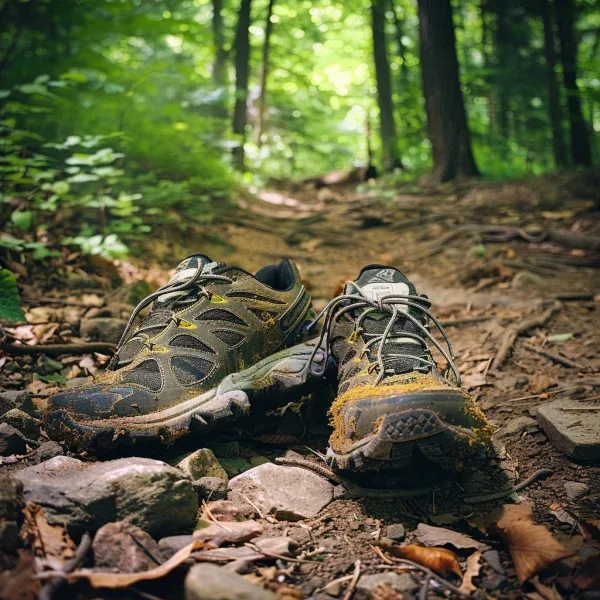by Nadia Sinclair

Inject some thrill into your run regimen and embrace the raw allure of trails shrouded in luscious green canopies instead of jostling with cars and people on city streets. With open skies overhead and the earthy scent of untamed nature in the air, trail running is a great way to increase your fitness level while basking in the tranquility that Mother Nature has to offer. But to acclimate to such an experience, equipping yourself with appropriate gear and technique is crucial. Here are comprehensive, top-notch suggestions to aid your transition into the invigorating realm of trail running.
1. Suit Up with Robust Trail Running Shoes
Off-road running demands sturdy shoes built to endure, especially on rocky, hilly or muddy terrains. Making sure you have the appropriate footwear with the right grip is paramount for smooth transitions between various surfaces.
2. Go Easy, Begin Slowly
Seasoned running coach, Tom Craggs, urges newcomers to give themselves enough time to become familiar with off-road terrain. Take it slowly, starting with gentle grassy hills or marked trail routes. Confidence and experience will grow over time, allowing you to ambitiously target more complicated routes or challenging terrains.
3. Embrace the Slow Pace
Running through woods, over hills, and around trees will obviously slow you down, but that’s the unique charm of trail running. Initially, you may find yourself winded, but adjust your speed and enjoy the journey. Trail running is about being one with nature, escaping the competitive hustle of traditional road running.
4. Stay Alert, Stay Safe
Use the trail path as a natural obstacle course, always keeping watch for sudden surprises that could jeopardize your run. To sidestep rogue roots and unseen hurdles, plan your upcoming steps, with eyes still able to feast on the beautiful surrounding scenery.
5. Master The Uphill Challenge
Running uphill requires maintaining an upright posture, engaging your core, and pushing through your pelvis. Short, steady strides are essential, as is driving your arms to generate impetus. Remember, avoid staring at your feet instead focus ahead, particularly while tackling steep inclines.
6. Exercise Caution During Downhill Runs
Although running uphill might be tiring, downhill runs can potentially be hazardous. Engaging your core muscles reduces strain on your limbs. A good tip is to slightly whirl your arms in small circles to maintain balance and control while descending rapidly.
7. Maintain a Consistent Speed
No matter how steep the slope, try to keep a flat-level cadence. Optimal steps that are neither too long nor too short, not only help conserve energy but also protect your joints from undue pressure, thus, making it easier and safer to navigate the uphill course.
8. Balance Makes Perfect
Establishing stability is crucial for trail running. Incorporating drills like single-leg squats, skipping, and on-the-spot jumps can greatly improve balance, foot placement, and rhythm, says Ceri Rees, founder of Wild Running.
9. Start With Simple Routes
Initially, skip complex circular routes that can be easy to lose track of. Trails lack curated signage, and until you’re accustomed to your surroundings, sticking to simple, straight paths will keep you from getting lost.
10. Pack Essentials
Hydration and nourishment are two key essentials that can never be overlooked, especially if you’re exploring secluded woods or uncharted trails. Equip yourself with sufficient water and energy-packed snacks to stay revitalized even when you unexpectedly cover extra miles.
trail running, gear, health, workouts, motivation
Leave a Reply